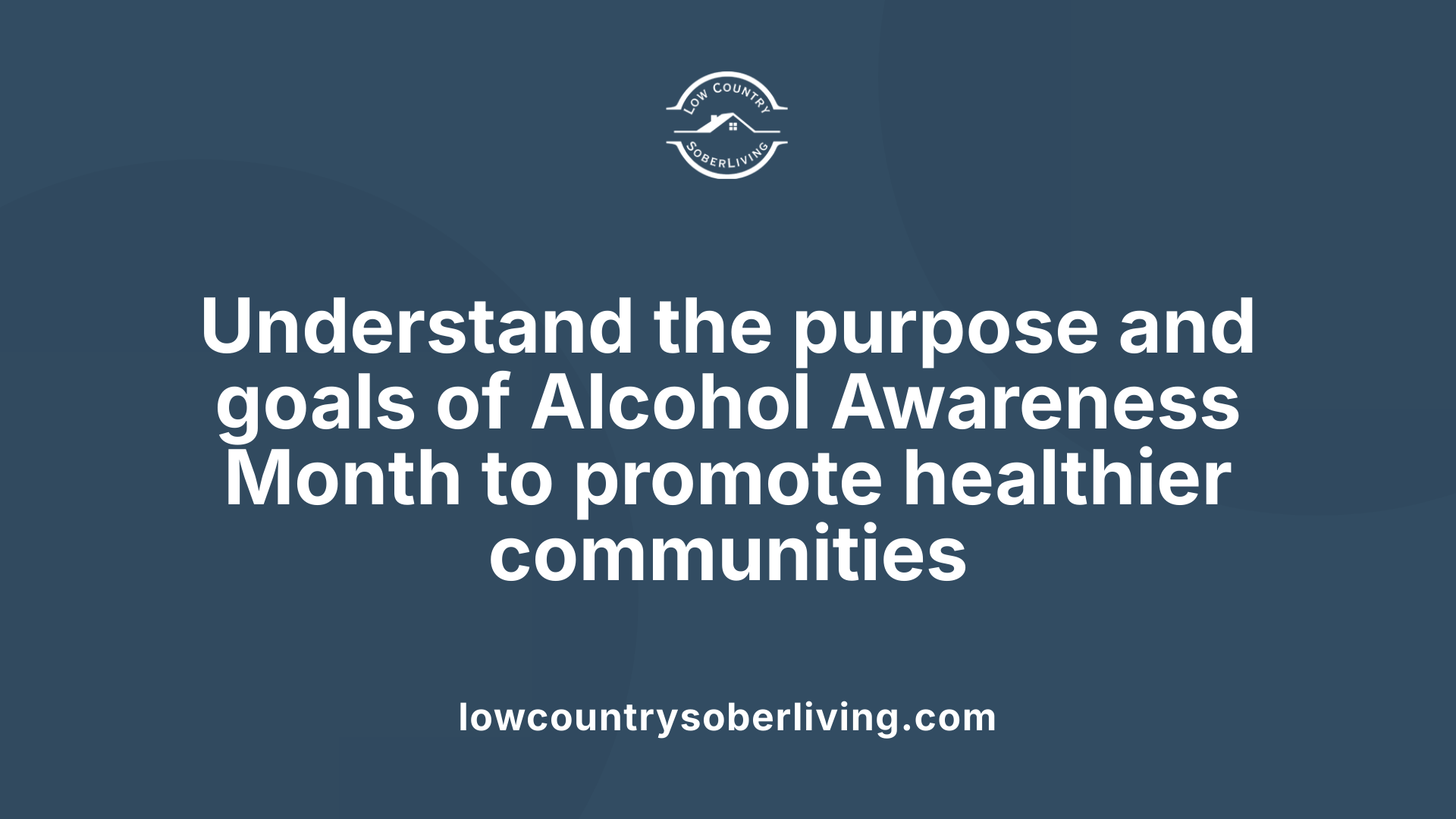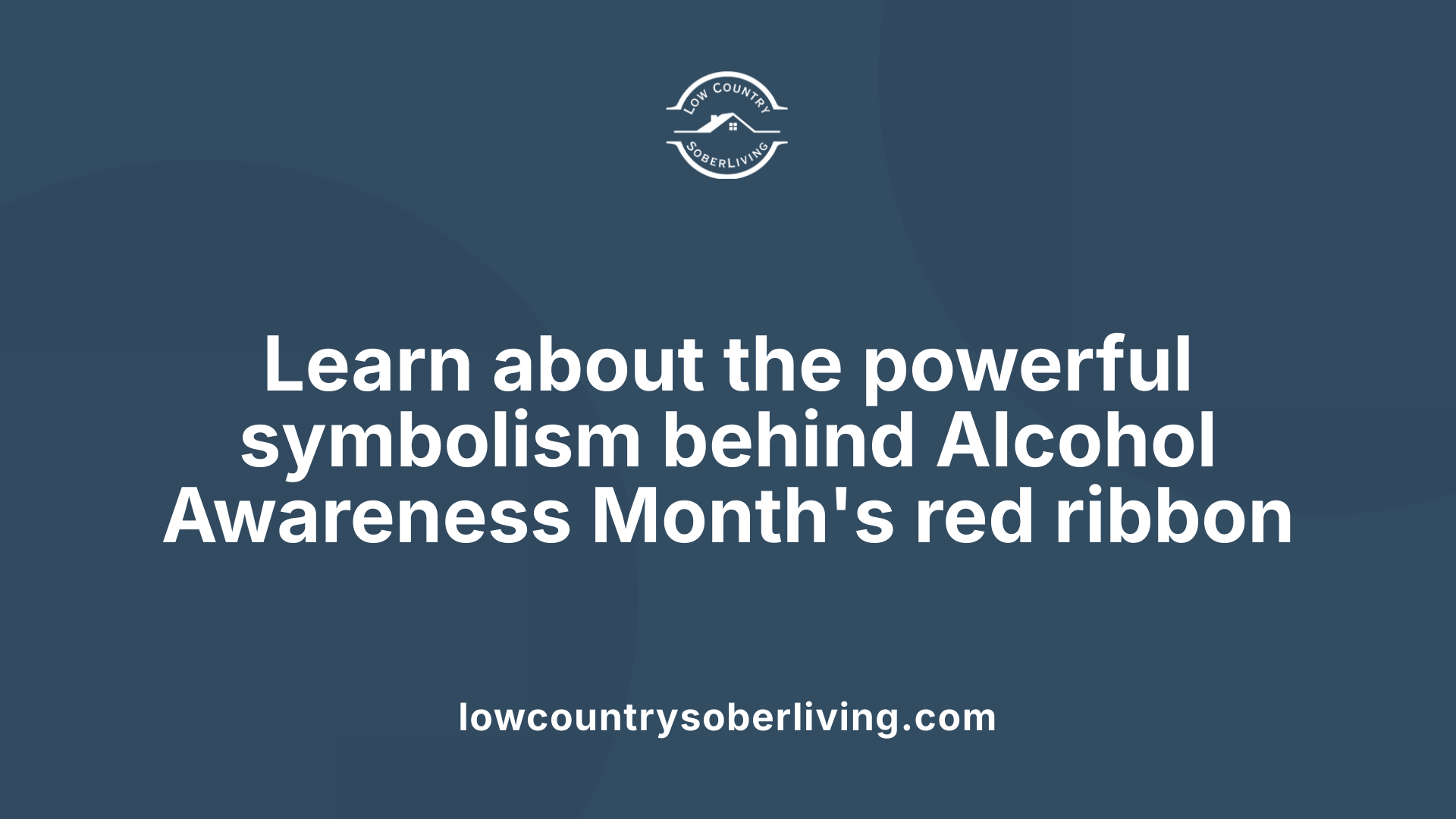Understanding the Significance of Alcohol Awareness Month
April marks Alcohol Awareness Month, an essential initiative dedicated to educate the public about the risks of alcohol misuse, promote healthier choices, and enhance access to treatment resources. Established in 1987 by the National Council on Alcoholism and Drug Dependence (NCADD), this annual campaign serves as a catalyst for communities nationwide to recognize alcohol’s profound impact on health, safety, and society at large.
Defining Alcohol Awareness Month and Its Purpose

What is Alcohol Awareness Month and why is it important?
Alcohol Awareness Month, observed every April, is a dedicated public health campaign designed to raise awareness about alcohol use disorder (AUD), its impact on health, and strategies for prevention and recovery. Since its inception in 1987 by the National Council on Alcoholism and Drug Dependence (NCADD), this annual event strives to educate communities about the risks associated with excessive alcohol consumption.
Alcohol misuse is a leading preventable cause of death in the United States, resulting in over 140,000 fatalities each year. It is linked to numerous health issues, including liver disease, certain cancers, heart problems, and neurological damage. Beyond health, alcohol abuse also contributes to social and economic challenges, such as increased crime, injuries from accidents, and high healthcare costs.
During this month, a variety of resources—ranging from educational websites to support groups—are made available to the public. These tools aim to dispel stigma, promote early intervention, and support those impacted by AUD. Events like community outreach, informational campaigns, and sober social activities help foster open conversations about alcohol's dangers and promote healthier choices.
Goals of the campaign
The core objectives of Alcohol Awareness Month include:
- Increasing public understanding of the causes, effects, and treatment options for AUD.
- Promoting responsible drinking habits and safe alcohol use guidelines.
- Providing access to resources for prevention, treatment, and recovery.
- Encouraging families and communities to support affected individuals.
- Reducing the stigma associated with alcoholism to facilitate early help-seeking.
By uniting communities and leveraging resources, the campaign aims to reduce alcohol-related health issues and save lives. It underscores that recovery is possible through medical treatments, behavioral interventions, and strong community support networks.
Overall, Alcohol Awareness Month plays a vital role in emphasizing that education, compassion, and accessible care are essential in combating alcohol misuse and fostering healthier communities across the nation.
Global and National Impact of Alcohol Misuse
What are some key facts and statistics about alcohol misuse and alcoholism?
Alcohol misuse and addiction are prevalent issues that pose significant challenges to public health across the globe and within the United States. Worldwide, alcohol-related deaths constitute approximately 6% of all deaths, translating to over 3 million fatalities annually. These deaths result from various causes including liver cirrhosis, cancers, accidents, and injuries.
In the United States alone, roughly 140,000 deaths each year are linked to excessive alcohol consumption. The impact extends beyond mortality, affecting millions of Americans; for example, in 2023, about 10% of individuals over age 12—approximately 28.9 million adults—were estimated to have alcohol use disorder (AUD). This disorder manifests as a reduced ability to control drinking habits, often leading to health complications and social issues.
The health risks associated with alcohol misuse are wide-ranging. Chronic conditions such as liver disease, several types of cancer, and cardiovascular problems are common among heavy drinkers. Additionally, alcohol increases the likelihood of accidents, injuries, and developmental impairments during pregnancy.
Despite ongoing public health efforts, alcohol-related harms continue to impose a heavy toll. The cumulative impact results in hundreds of thousands of deaths each year and places a substantial economic burden, including healthcare costs, legal expenses, and lost productivity. Globally and nationally, these figures underscore the urgent need for increased awareness, prevention strategies, and accessible treatment options to combat alcohol misuse and its far-reaching consequences.
Resources for Prevention, Treatment, and Recovery
Efforts to combat alcohol addiction involve a broad spectrum of resources that cater to individuals at various stages of their sobriety journey. These resources can be categorized into professional services, community support, and digital tools.
Professional counseling services and behavioral therapies form the backbone of treatment options. Evidence-based treatments such as cognitive-behavioral therapy (CBT) and motivational enhancement therapy are commonly used to help individuals understand their drinking patterns and develop coping skills. Medical treatments include FDA-approved medications like Naltrexone, Acamprosate, and Disulfiram, which can reduce cravings and discourage drinking.
Treatment settings vary to accommodate different needs, from outpatient programs that allow individuals to live at home while attending therapy sessions, to inpatient and residential care for those requiring intensive support. Organizations such as TreatmentFind.gov and the National Institute on Alcohol Abuse and Alcoholism (NIAAA) offer directories and information to find appropriate treatment facilities.
Support organizations play a crucial role in ongoing recovery. Groups like Alcoholics Anonymous (AA), Al-Anon (for families), SMART Recovery (focused on self-empowerment), and peer recovery networks provide emotional backing, accountability, and community connections that foster long-term sobriety.
Online tools and community programs also serve as accessible resources. Many websites offer educational material, virtual support meetings, crisis helplines, and interactive tools to assess addiction levels and plan next steps. Community initiatives such as the Salvation Army and Volunteers of America extend outreach and recovery programs to underserved populations.
Using these combined efforts, individuals and families can access comprehensive support tailored to their specific needs, making recovery a more attainable goal for many.
Engaging in Observance and Promoting Awareness

Activities and events during Alcohol Awareness Month
During April, communities and organizations hold a variety of activities to promote awareness about alcohol misuse and its effects. These include educational seminars, public health campaigns, community walkathons, and awareness booths at local events. Some cities organize sober social events like ‘Dry Parties’ or ‘Mocktail Battles’ to demonstrate fun ways to socialize without alcohol. The Washington DC Battle of the Mocktails is one example of an event encouraging sober celebrations.
Additionally, health departments and organizations like SAMHSA and NIAAA promote distribution of fact sheets, flyers, and resources that aim to educate the public about the risks of alcohol misuse, signs of alcohol use disorder (AUD), and available treatment options. Many also participate in screening initiatives, providing quick assessments through tools like Screen4Success to identify individuals who may need help.
How individuals can participate
People can actively join the campaign by participating in local or online events, sharing information on social media, and wearing symbolic items such as the red ribbon, which signifies awareness and support for individuals affected by alcohol misuse. Engaging in ‘Alcohol-Free Weekends’ or abstaining from alcohol for 72 hours encourages self-reflection and demonstrates solidarity.
Parents, teachers, and caregivers can facilitate discussions about alcohol with teens and young adults, fostering open dialogue. Attending workshops, webinars, and support groups provides additional avenues for involvement. Seeking professional help if personal or family issues relate to alcohol use is also a crucial way to support the cause.
The significance of symbols like the red ribbon
The red ribbon has become a universal symbol for awareness campaigns, including Alcohol Awareness Month. Wearing a red ribbon or displaying it visibly is a simple, effective way to show support, spark conversations, and remind others about the importance of responsible drinking and the availability of help. These symbols serve as visual markers of solidarity, encouraging community engagement and reducing stigma associated with alcohol problems.
Overall, collective participation and awareness efforts during April help destigmatize alcohol misuse, promote healthier behaviors, and facilitate access to resources for those in need. Whether through attending events, sharing information, or wearing symbolic items, everyone has a role in fostering a supportive environment for recovery and responsible consumption.
The Cultural and Societal Significance of Awareness Campaigns

History and origins of Alcohol Awareness Month
Alcohol Awareness Month was established in 1987 by the National Council on Alcoholism and Drug Dependence (NCADD). Since then, it has served as an annual public health campaign dedicated to increasing understanding about alcohol use disorder (AUD) and its consequences. Initially launched to combat the rising tide of alcohol-related problems and stigma, the observance has grown into a nationwide effort to promote education, prevention, and recovery.
The month of April was chosen to initiate conversations about responsible drinking and to highlight available resources for those struggling with alcohol misuse. Activities during this period range from community events to educational campaigns aimed at addressing underage drinking, promoting safe alcohol consumption, and encouraging those affected to seek help.
Over the years, its campaigns have emphasized the importance of early intervention, mental health support, and community involvement, making it a crucial part of the broader effort to reduce alcohol-related harm in society.
Symbolism and messaging
A prominent feature of Alcohol Awareness Month is the use of visual symbols that convey its mission. The most recognizable among these is the red ribbon, which has become the emblem for substance abuse awareness.
The red ribbon symbolizes the importance of awareness, support, and solidarity for individuals affected by alcohol misuse. Its adoption by NCADD as the campaign’s symbol since 1987 aims to foster open discussions about alcoholism, reduce societal stigma, and promote understanding that AUD is a treatable medical condition.
The use of the color red in the ribbon is intentional; red is widely associated with alertness, urgency, and compassion. The visual impact of the ribbon encourages communities, employers, schools, and families to participate in conversations about preventing alcohol abuse, recognizing warning signs, and seeking help.
Overall, these symbols serve to unify efforts across various sectors, offering a powerful message: that awareness, education, and proactive action can save lives and improve health outcomes.
More about the symbolism and history of Alcohol Awareness Month
To delve deeper into the origins and significance of these symbols, searching for 'symbolism and history of Alcohol Awareness Month' can provide a wealth of context regarding how these visual cues and campaign strategies evolved to become integral to public health efforts.
Fostering a Safer, Healthier Society
As Alcohol Awareness Month unfolds each April, it reminds us of the importance of understanding, compassion, and proactive intervention in addressing alcohol-related health issues. Through increased awareness, community engagement, and accessible resources, society can reduce the devastating toll of alcohol misuse, support those affected, and promote healthier lifestyles. Collective effort and ongoing education are essential to fostering a culture where responsible drinking and effective treatment are normalized, ultimately leading to safer, more resilient communities.
References
- April is Alcohol Awareness Month
- Alcohol Awareness Month | SAMHSA
- April is Alcohol Awareness Month - Homeland Security
- Alcohol Awareness: 20 Key Facts - Valley Hope
- April is Alcohol Awareness Month - MA HelplineMA Helpline
- Governor Proclaims Alcohol Awareness Month
- Alcohol Awareness Month - District Health Department 10
- April is Alcohol Awareness Month: Recognizing the Signs, Seeking ...
- Raising Awareness about the Dangers of Alcohol Use Among Teens
- April is Alcohol Awareness Month, don't be afraid to talk about it

